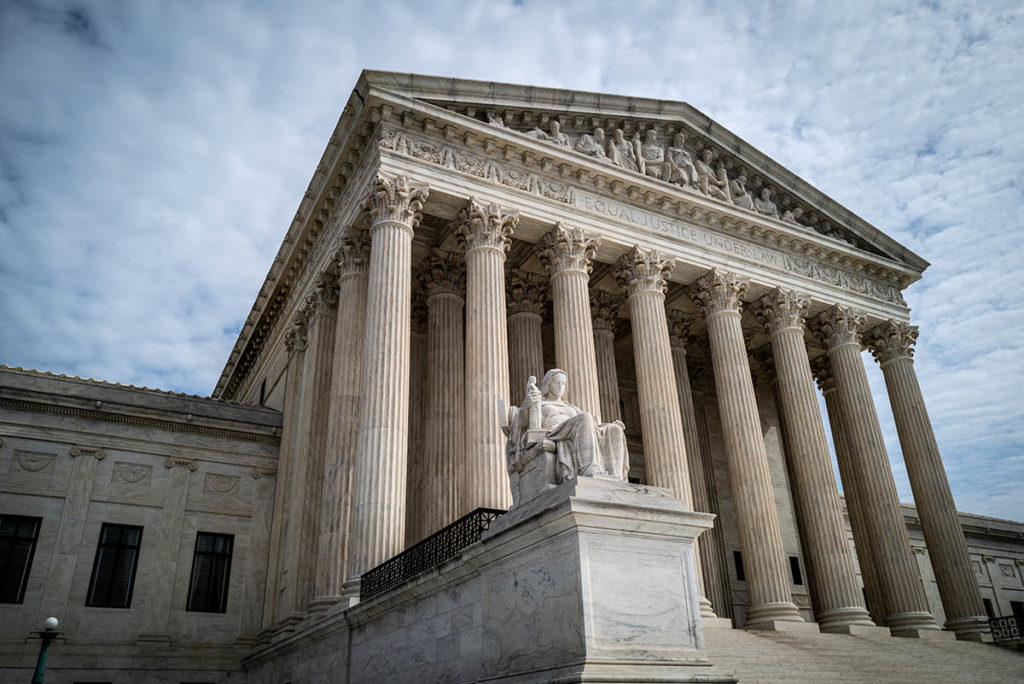
NRECA CEO Jim Matheson said the Supreme Court’s 6-3 ruling Thursday against the Environmental Protection Agency’s attempt to set carbon dioxide emission rates for existing power plants is a significant affirmation of electric cooperatives’ position in the case and will help co-ops’ efforts to keep power affordable and reliable.
“Today’s ruling clearly acknowledges that EPA overstepped its regulatory authority in the Clean Power Plan,” Matheson said June 30 after the court handed down its opinion in West Virginia v EPA.
“The court’s decision resets the agency to its appropriate regulatory path, requiring it to set achievable emissions guidelines that can be accomplished at existing power plants while also allowing states to consider local factors and have the final say on compliance options.”
The Supreme Court reversed and remanded a decision by the U.S. Court of Appeals for the District of Columbia Circuit that had upheld EPA’s Clean Power Plan to cap carbon emissions from the current fleet of coal-fired power plants.
The 2015 Clean Power Plan never took effect after opposition to the plan attracted a rare stay by the Supreme Court.
In the ruling released Thursday, the justices focused on whether Congress granted EPA authority to set carbon dioxide emissions that would shift generation resources away from baseload coal plants and toward renewable resources through what the majority opinion dubbed a “little-used backwater” of the Clean Air Act called Section 111(d). That section authorizes regulation of pollution from existing sources.
“On EPA’s view of Section 111(d), Congress implicitly tasked it, and it alone, with balancing the many vital considerations of national policy implicated in deciding how Americans will get their energy,” Chief Justice John Roberts wrote. “There is little reason to think Congress assigned such decisions to the Agency.”
Roberts added: “Capping carbon dioxide emissions at a level that will force a nationwide transition away from the use of coal to generate electricity may be a sensible ‘solution to the crisis of the day.’ But it is not plausible that Congress gave EPA the authority to adopt on its own such a regulatory scheme in Section 111(d).”
The majority concluded that limiting carbon dioxide emissions from existing power plants as the Clean Power Plan sought to do is outside EPA’s authority: “A decision of such magnitude and consequence rests with Congress itself, or an agency acting pursuant to a clear delegation from that representative body.”
NRECA supported an amicus brief filed by co-ops with the Supreme Court outlining key arguments as to why EPA’s Clean Power Plan was flawed and threatened electric reliability.
The rule’s “generation shifting” conflicted with the plain text of the Clean Air Act that preserves states’ authority to set emission standards for existing generating units within their borders, the co-ops told the court.
The D.C. Circuit of Appeals also ignored the Supreme Court’s “major questions doctrine,” which asserts that Congress must speak clearly when it assigns decisions of vast economic and political significance to a federal agency, the co-ops said.
Matheson said co-ops are doing their part to deliver electricity through a mix of reliable resources at a reasonable price, which is key given recent warnings by federal agencies of potential summer outages.
“Electric co-ops are investing in a diverse energy mix to keep the lights on reliably and affordably for American families and businesses,” he said. “The energy decisions we make today will determine whether there are sufficient resources for the lights to come on tomorrow.”
Cathy Cash is a staff writer for NRECA.